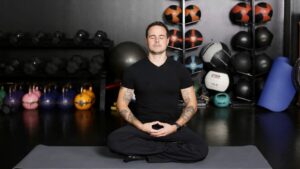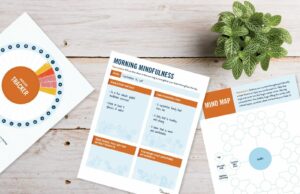Healthy, relaxing, rejuvenating—these are only some of the words that can define the experience that yoga brings. Many people are practicing yoga these days mainly due to the benefits that it brings to the mind and body. It’s the kind of workout that not only strengthens your physique but also helps you find inner peace.
If you’re thinking about starting a yoga practice, then great! This is a good way to start a healthy and positive lifestyle.
However, being a beginner at yoga can also be quite intimidating. There are just so many things to learn such as the different styles, Sanskrit names of the poses, how to execute the poses, and many more. It’s understandable if you feel kind of overwhelmed by it, most people do at the beginning!
But the good thing is, you are willing to learn. You have an intent of learning and applying yoga in your life. Surely, it’s going to be a challenging process but it will also be filled with fun and meaningful experiences. Fortunately, this article will give you an ultimate guide on everything you need to know about yoga. Read on first before grabbing and rolling out that yoga mat!
What is yoga?
This may be a very basic question—but it’s always good to start from the beginning.
Yoga is a meditative form of workout that originated in India wherein you execute different poses accompanied by proper breathing techniques. It mainly consists of slow-paced and precise movements that are meant to strengthen and tone parts of your body, especially the muscles and joints. It also has developed so many styles and variations over the years to serve the different needs of the body. Furthermore, yoga is an inclusive type of exercise that is made for people of all ages and sizes.
If you are worried about not doing it right in the beginning, that’s okay. Yoga classes allow every student to learn at their own pace. The important thing is that you are comfortable doing the poses. Yoga isn’t just about working out and getting into fitness; it is about connecting with the earth and yourself.
What are the benefits of yoga?
Yoga is a great workout that focuses on improving your health through the means of self-healing. The movements involved may be considered passive and slow-paced compared to other forms of vigorous exercises, but yoga manages to provide countless numbers of benefits to the mind and body.
Yoga practice is an essential part of a good lifestyle. To prove that, here are some of yoga’s notable benefits:
- improves your strength, balance, and flexibility
- improves blood circulation, respiration, and cardio
- maintains metabolism
- protection from injury
- weight loss
- reduces stress and anxiety
- reduces insomnia
- develops mindfulness and a positive attitude towards life
What are the styles of yoga for beginners?
Since yoga has so many styles and variations, it may a little overwhelming to choose which one’s the best for you. To help you decide, listed below are some of the common styles of yoga:
1. Hatha yoga
Hatha yoga is a slow-paced type of yoga that involves precise movements. This is considered to be a gentle type of yoga class because there are pauses in between yoga poses.
2. Ashtanga, Vinyasa, and Power yoga
These yoga classes involve a sequence of poses that are energetic and vigorous. If you want to work on your cardio, going for a style of yoga that’s filled with continuous powerful movements is a good idea.
3. Restorative yoga
This is the practice of asanas wherein yoga poses are held longer compared to other classes. The use of props for support is often needed here.
4. Hot yoga
Living up to its name, hot yoga is where you practice a series of 26 different poses in a room that’s heated up to 105 degrees Fahrenheit. The profuse sweating will help you detoxify and stretch your body even better.
5. Kundalini yoga
A style of yoga that’s known for its “healing” effect, Kundalini involves yoga poses accompanied by breathing exercises and meditation. It aims to help us unlock our spiritual energy at the base of our spine.
What should I expect from yoga?
Practicing yoga for the first time can sometimes give you the jitters, especially if you are not used to engaging in physical activity with strangers. You might be feeling a little self-conscious that you might not learn or progress as fast as the others do. Have a little insight on what to expect from yoga so that you won’t feel too nervous knowing what’s bound to happen.
Lots of breathing exercises
Breathing techniques are a major part of yoga practice. During the actual yoga classes, you will find yourself doing a lot of inhaling and exhaling as you move about. According to a yoga therapist, our breath is associated with our energy. Changes in the breath affect the cardio and nervous system.
Series of yoga poses
Yoga, unlike other forms of exercise, does not necessarily require the need of workout equipment. It’s more of focusing on your body and your inner energy. Expect that you will be executing series of poses that are meant to tone and strengthen your body. Some might be challenging for you to do, but you can always modify it to your capability especially if you are a beginner.
Feeling uncomfortable
Concerning the point stated above, doing certain poses for the first time may feel awkward or stiff. You might feel a little discomfort here and there. That’s normal, considering that it’s your first time. Eventually, your body will warm up to the movements and you will be doing better as long as you practice yoga consistently.
A yoga teacher will be guiding you
One good thing about yoga is that a yoga instructor is present in every class. The teacher will guide the students on how to do the poses and assist whenever necessary. If you have any questions or concerns, you can always ask the yoga instructor to help you out.
The need for props
Some yoga classes and poses might need the support of props. There will be times when you will be needing blankets, pillows, bolsters, and other yoga props to help you execute the poses right. Most of the time these are available in yoga studios but you are more than welcome to bring your own.
Differences in progress
Keep in mind that your level of understanding is not the same as everyone else’s. Chances are you won’t be progressing as fast as the other yoga practitioners. There is also a possibility that you’re a fast learner. Learning paces are different, the important thing is you do your best to keep up.
Your body will be sore
Prepare to feel some soreness the next day after your first yoga class. It is nothing to be worried about—during yoga classes you tend to use a lot of your muscles. The first time you take a yoga class might wake up your body in a new way but you’ll eventually get used to it as you practice regularly.
What should I do to prepare for my yoga practice?
Now that you know what to expect, it’s time for you to know how to prepare. Yoga requires a lot of dedication, commitment, and preparation. You need to equip yourself well before rolling out that mat.
So, what do you need to prepare before joining a yoga class?
Familiarize yourself with basic yoga poses
It’s important to study even the basic yoga asanas. You don’t have to be a total expert on yoga right away, but it would help you learn better if you have an initial idea of what you are going to do. You can learn it on your own with the help of the internet. Try watching videos and reading articles on how to do the yoga poses.
Avoid heavy meals before the class
Eating is a must before physical activity. However, eating too much will make it difficult for you to work out and it can also be dangerous to the body. Make sure to eat a light meal before your yoga class so that your body will have the necessary energy and nutrients that it needs but you won’t also be feeling full or bloated.
Talk to the yoga teacher
Let the yoga teacher know that it’s your first time joining a yoga class. This way, they will get to know your needs and limitations. They will be investing a little more focus on you and will guide you as you navigate your way through the yoga session.
Arrive early
Punctuality is also a good quality to embody in practicing yoga. Try to arrive on time or even earlier at the yoga studio so that you have time to relax and prepare yourself physically and emotionally. Arriving early means getting find a good spot in the studio and having time to introduce yourself to the assigned yoga instructor.
Which yoga poses are best for beginners?
To get started with yoga, you should know about the yoga movements. Not all poses and postures are optimal for beginners. Some are a little complicated to do.
If you’re feeling overwhelmed, you can read below to determine which yoga poses are great for you:
- Mountain Pose – a standing pose that aims to help you get a sense of your feet; it’s a preparation pose
- Downward-Facing Dog Pose – this helps strengthen the body
- Child’s Pose – aims to reduce the tension in the body
- Tree Pose – develops your ability to focus and balance with proper breathing
- Triangle Pose – this is good for strengthening and toning your legs
- Bridge Pose – this strengthens and satisfyingly stretches the front part of your body
- Plank Pose – engages and strengthens your abdominal region
- Corpse Pose – this is centered on the relaxation of the body; often done at the end of the session
How often should a beginner do yoga practice?
It is recommended that beginners start by practicing yoga at least three to five times a week. You can start slow and little as long as you maintain consistency. As time passes by, your body will eventually adapt to the routine. Soon enough you will find yourself being able to do yoga at least five to six times per week.
If you have health-related issues or existing medical conditions, it would be best to consult a doctor or reach out to a yoga instructor first.
Can I teach myself yoga?
You can start yoga practice on your own by reading about it or watching videos to guide you. Some of us do not have the luxury to pay for actual yoga classes, so extra measures were made to cater to those people. Yoga is one of the most inclusive types of workout. As long as you have got the perseverance and dedication to practice yoga, you can surely learn it yourself.
However, for the full experience, it is recommended for beginners to learn in a yoga studio where a yoga instructor can teach them in person.
How do I start doing yoga at home?
You may want to get started with yoga at home and many other people do it for several reasons. If you find yourself tied to your house possibly due to your other responsibilities or if you cannot afford to apply for yoga classes in a studio yet, then you can start at home.
All you have to is find an area in your house that’s spacious enough for you to move around in. You will be needing a yoga mat and a bunch of props that you might require to support you in some poses. For the actual sessions, you can watch videos on the internet to guide you through the process. The advantage of this is that you will be more comfortable learning within the confines of your home.

















